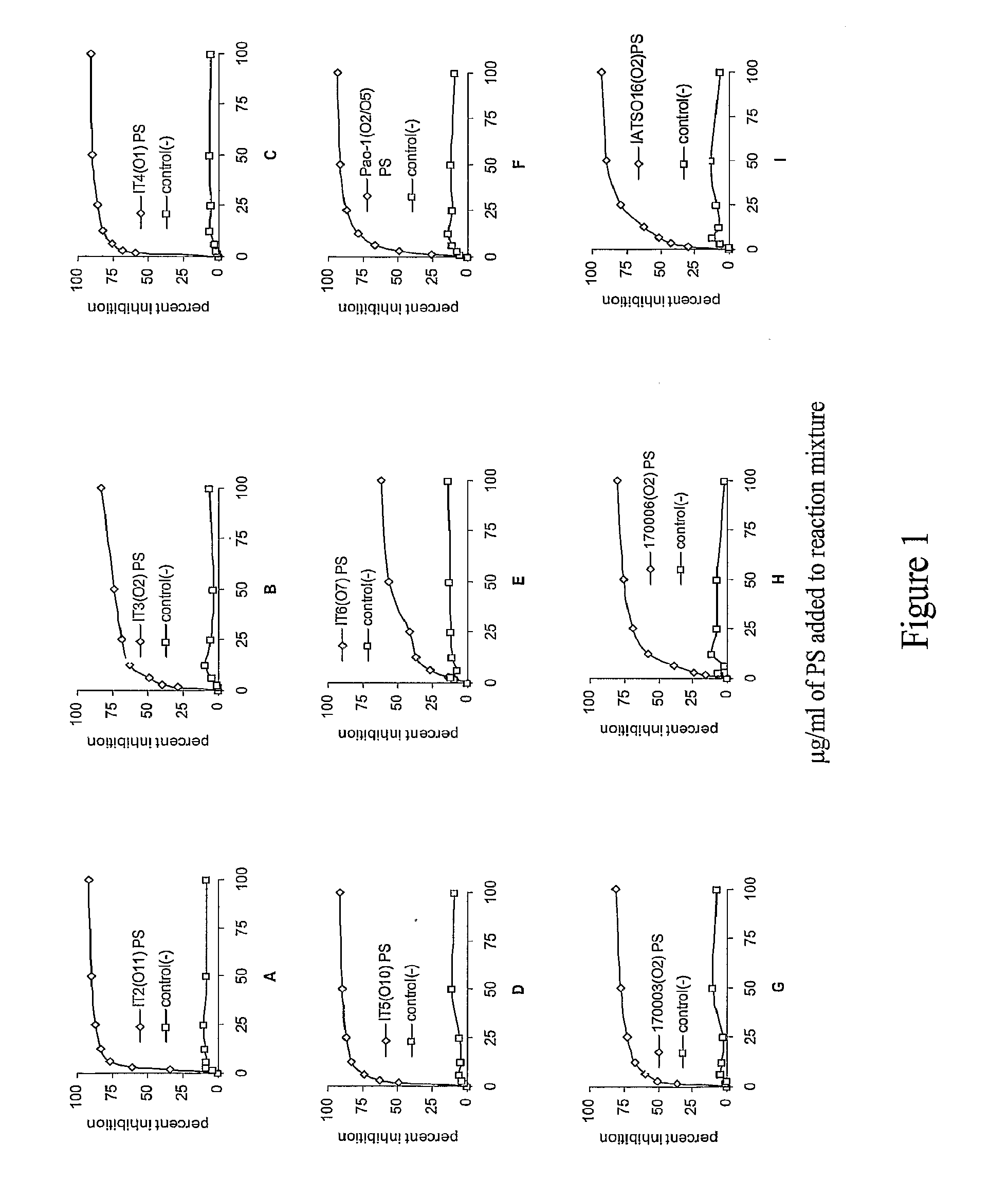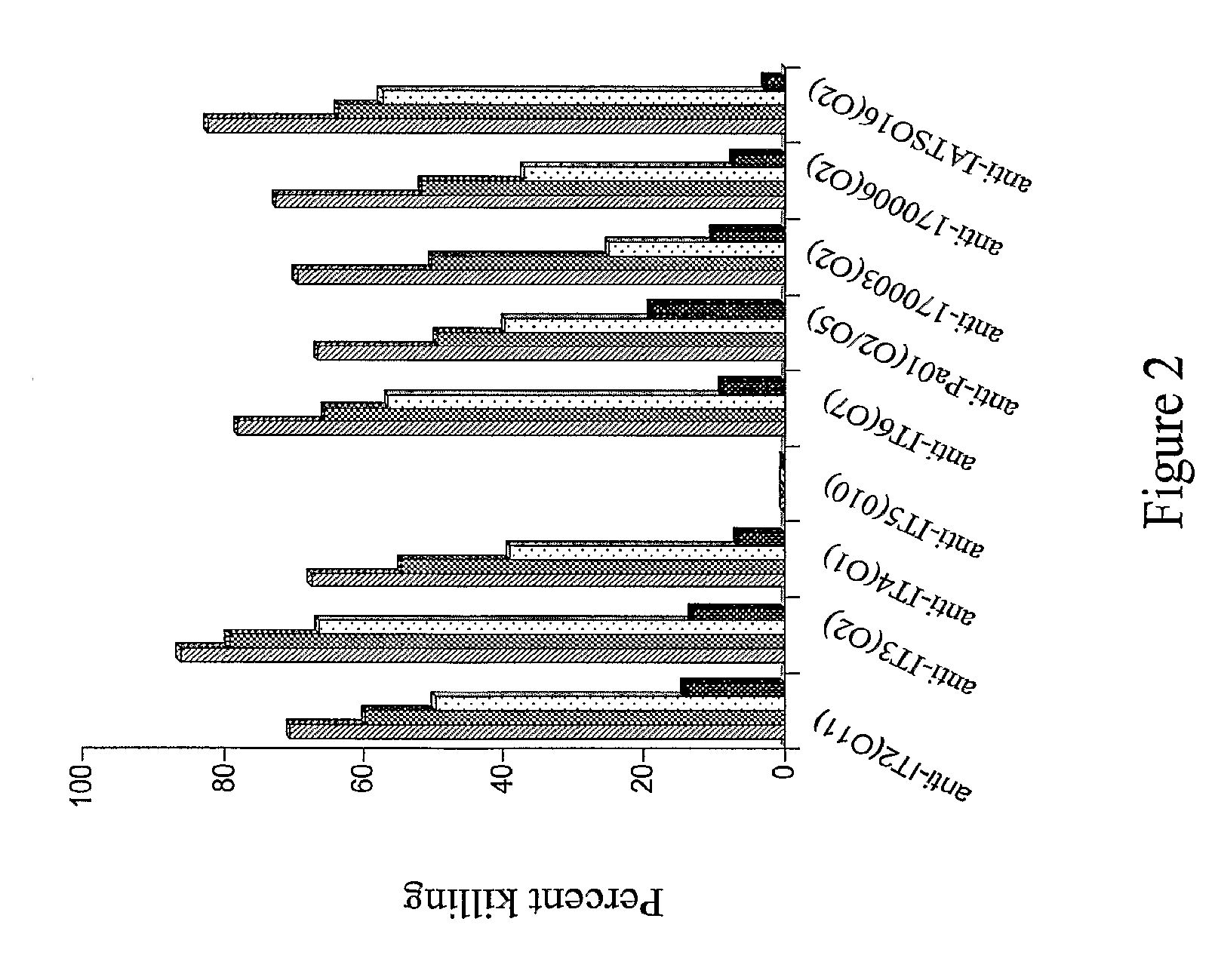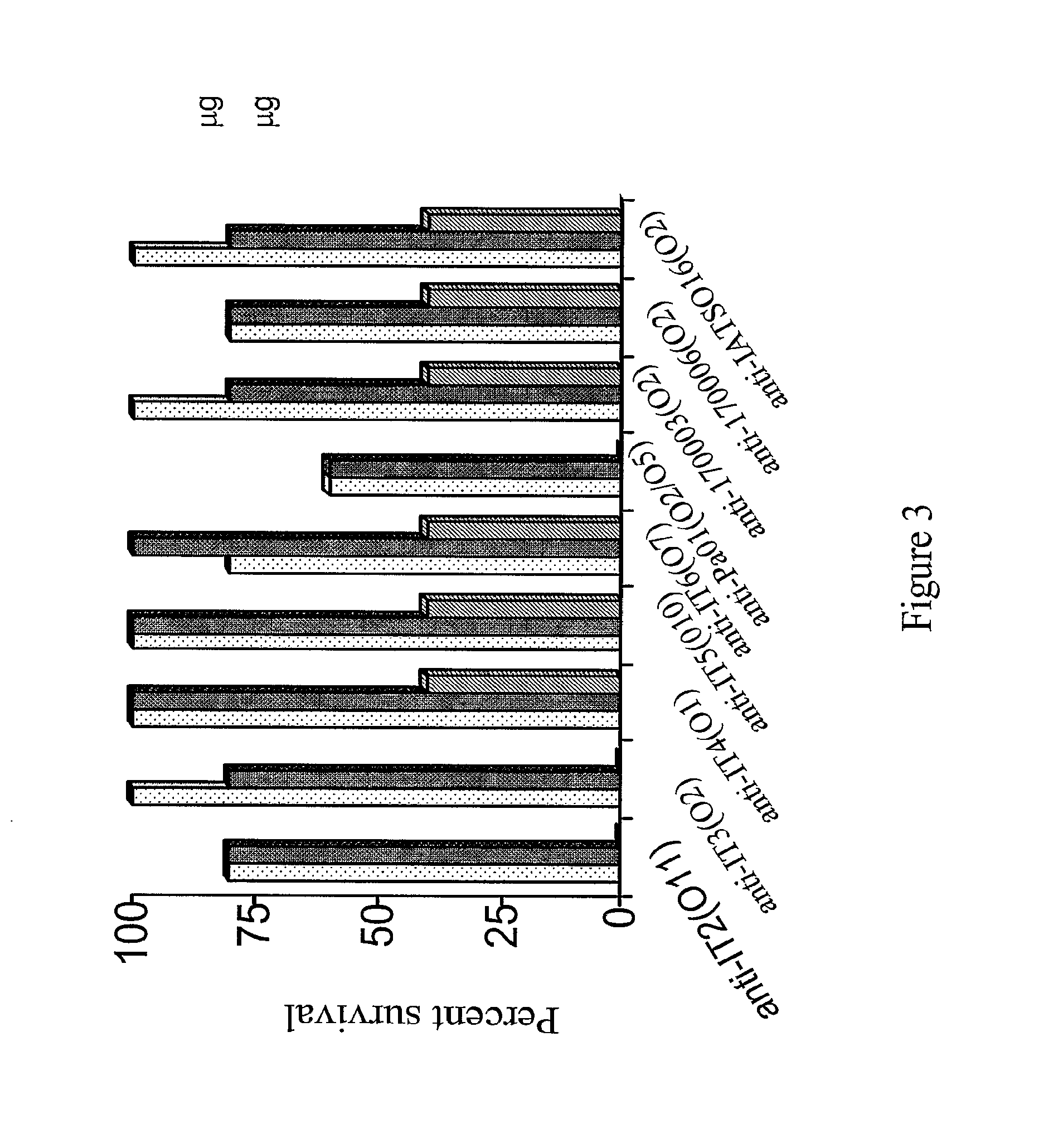Human Anti-pseudomonas-aeruginosa antibodies derived from transgenic xenomouse
a technology of human anti-pseudomonas aeruginosa and transgenic xenomouse, which is applied in the direction of antibodies, medical ingredients, bacteria, etc., can solve the problems of progressive lung damage, increased risk for patients, and debilitating inflammatory exacerbations. intermittent episodes,
- Summary
- Abstract
- Description
- Claims
- Application Information
AI Technical Summary
Benefits of technology
Problems solved by technology
Method used
Image
Examples
example 1
Generation of Mice and Hybridomas That Produce Fully Human Antibodies to P. aeruginosa LPS
[0117]P. aeruginosa strains Fisher Devlin (International Serogroups) It-1 (06), It-2 (011), It-3 (02), It-4 (01), It-5 (010), It-6 (07), PA01 (05), 170003 (02), IATS016 (02 / 05), and 170006 (02)—all of which were originally clinical isolates—were used for mouse immunizations, mouse protection assays and opsonic assays. Bacteria for mouse challenge assays were freshly plated onto Pseudosel™ agar (BBL, Becton Dickinson, Sparks, Md.), then were incubated at 37° C., and cells from a single colony were inoculated into LB broth and incubated at 37° C. in a shaking water bath to a concentration of 5×108 cfu / ml. Bacteria were centrifuged at 10,000 rpm for 10 minutes, resuspended and washed in chilled phosphate buffered saline (PBS) and diluted as needed. Bacteria for immunization experiments were grown as above, heat-killed at 60° C. for one hour and stored at 4° C. until use.
[0118]The high molecular we...
example 2
Characterization and Usage of Variable Region Genes from Transgenic Mouse-Derived Anti-LPS Antibody
[0121]Human heavy-chain and light-chain variable (V) regions were cloned into a T7-promoter driven vector by amplifying the variable regions. The heavy-chain variable (VH) region and the light-chain variable (VL) region primers used are included in Table 1. These primers were synthesized by Integrated DNA Technologies (Coralville, Iowa). PCR was run at 94° C., 60 sec; 50° C., 60 sec; 72° C., 120 sec for 35 cycles. The PCR products were run on a 2% Tris-acetate EDTA agarose gel and the bands (423 bp Vκ, 441 bp VH) were isolated using the QIAquick® gel-extraction kit (Qiagen, Inc., Valencia, Calif.). The cDNA was cloned into the pT7Blue vector and transformed into Escherichia coli using the Perfectly Blunt® Cloning Kit from Novagen (EMD Biosciences, Inc.). Positive clones were grown overnight in LB-ampicillin broth. The DNA was extracted from the bacteria and purified by Qiagen® Miniprep...
example 3
Detection of Anti-P. aeruginosa LPS Antibodies
[0123]Enzyme-linked immunosorbent assay (ELISA) was used to detect antibodies to the various serotypes of P. aeruginosa LPS O-side chain in sera of immunized mice and in hybridoma supernatants as we have previously described. See Schreiber et al. J. Immunol. 146:188-93 (1991). Briefly, 96-well microtiter polystyrene plates (NUNC, Denmark) were coated with 100 μl per well of 2 μg / ml of purified high MW PS or 1×107 cfu / well heat-killed P. aeruginosa overnight at 4° C., washed, and blocked with 200 μl / well of 1% bovine serum albumin (BSA; Sigma-Aldrich, St. Louis, Mo.) in PBS and 0.05% Tween 20™ (Amresco®, Solon, Ohio). Plates were washed and incubated overnight with serial dilutions of Mab or sera in 1% BSA in PBS. Plates were washed, and bound antibodies were detected by adding isotype-specific alkaline phosphatase-conjugated mouse-anti-human polyclonal antibodies (Southern Biotechnology Associates, Birmingham, Ala.). Plates were develope...
PUM
| Property | Measurement | Unit |
|---|---|---|
| dissociation constant | aaaaa | aaaaa |
| dissociation constant | aaaaa | aaaaa |
| time | aaaaa | aaaaa |
Abstract
Description
Claims
Application Information
 Login to View More
Login to View More - R&D
- Intellectual Property
- Life Sciences
- Materials
- Tech Scout
- Unparalleled Data Quality
- Higher Quality Content
- 60% Fewer Hallucinations
Browse by: Latest US Patents, China's latest patents, Technical Efficacy Thesaurus, Application Domain, Technology Topic, Popular Technical Reports.
© 2025 PatSnap. All rights reserved.Legal|Privacy policy|Modern Slavery Act Transparency Statement|Sitemap|About US| Contact US: help@patsnap.com



